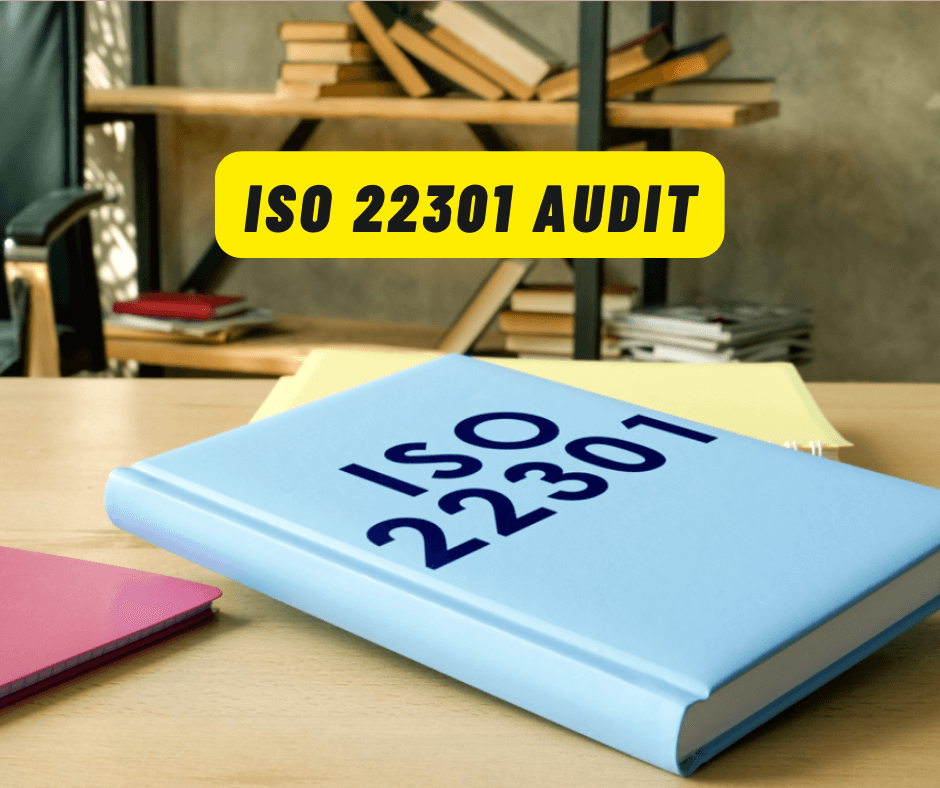Disasters in business don’t come with a warning. Therefore, successful organizations prioritize business continuity plans to avoid any interruption in their operations. This is when an ISO 22301 audit is needed the most. The flaws in a business continuity framework are detected through this process. Professionals involved in auditing evaluate risks and suggest solutions for managing the business continuity system.

Jump ahead to
What is ISO 22301?
It is the benchmark for the level of efficiency of a business continuity system, and is globally accepted. ISO 22301 lays down regulations that emphasize on immediate remedies to serious consequences of unwanted disruptions in businesses. Therefore, only a BCMS (Business Continuity Management System) framed on the basis of these rules serves the purpose. Though meant for enterprises in the industrial sector, the implementation of BCMS keeps every type of organization at advantage.
How can an organization become ISO 22301 Certified?
To get certified, an organization must meet ISO 22301 certification requirements, which are as follows:
- The existing business continuity plan must be following the PDCA concept. It should be designed to enhance the quality of business procedures.
- It needs to be capable of controlling risks and their subsequent downtime.
- The BCMS must assure organizational flexibility despite disruptions.
- It must be able to safeguard the reputation and revenue of the concerned organization.
- Recovery plans and risk awareness must be the core areas of the BCMS.
These factors are first checked by the certification awarding body via an internal assessment of an organization’s business continuity plan. This stage confirms if a particular BCMS complies or not with ISO 22301 obligations. Next is an ISO 22301 audit process to finally determine the existing business continuity model’s efficacy.
Benefits of aligning BCMS with ISO 22301
Compliance with ISO 22301 allows an organization’s business continuity structure to minimize the impact of potential risks.
- ISO compliance increases the alertness of the organizational heads regarding the performance of various departments. This leads to an overall improvement of the organization.
- Regular audits cause the business continuity system to stay updated.
- Aligning with this ISO standard makes the internal procedures legally compliant.
- It ascertains predictable output by reducing downtime otherwise caused by interrupted productivity.
- Conforming to ISO 22301 allows the organization to apply for such tenders with an operational BCMS as their application criteria.
- Less expenses have to be borne by the organization, which gives it access to insurances with low premiums.
- A risk awareness culture develops within the organization thereby, strengthening its internal management.
What is the necessity of an ISO 22301 audit?
The reason for conducting an audit is to ensure if the implemented BCMS is exercising all ISO 22301 regulations proficiently. It is a documented method of analyzing to what extent the particular ISO requirements are being fulfilled. An internal audit programme is both essential and challenging at the same time. Special skills are required to conduct audits and the professional ISO auditors are most appropriate for this job. Various business continuity procedures are evaluated through audits. The main objective is to affirm an organization’s strength in handling the business impact of a crisis.
Categories of ISO 22301 audits
First party or internal ISO audits are those conducted by certified employees of the organization whose BCMS is in question. In the absence of suitable internal resources, the enterprise may outsource the auditing services.
The third party audit is the task of the ISO 22301 certification accredited body. This kind of audit ensures that the BCMS of the concerned organization is fit for bearing the certification. Audit results are evaluated by the management system of ISO.
These audit methods prove whether the non-conformities and issues faced by the BCMS are being addressed by the implementer organization.
Role of an ISO 22301 Auditor
The auditor verifies if the respective business continuity plan meets the internal requirements of conforming to ISO policies. He/she ensures if the organization is meeting its desired goals through the existing BCMS. Scope for improvement in the plan is also determined after assessing the effectiveness of the system and its processes.
How to prepare for an ISO 22301 Audit?
Creating an ISO 22301 audit checklist is the most significant step in preparing for the audit process. The checklist ascertains the successful completion of the audit resulting in compliance with ISO standards. It is beneficial enough for providing an overview of the quality of an organization’s internal procedures. This helps in identifying and making the necessary improvements. Checklists are formed through careful interpretation of the specific ISO regulations to set the evaluation criteria for the audit.
Professionals who are appointed to perform this daunting task of audit are called ISO 22301 Lead Auditors. They are the drivers of an organization’s BCMS. These individuals undergo the ISO 22301 Lead Auditor Training to become certified professionals. They are responsible for Identifying flaws in business continuity plans, and to initiate improvements for the best results.